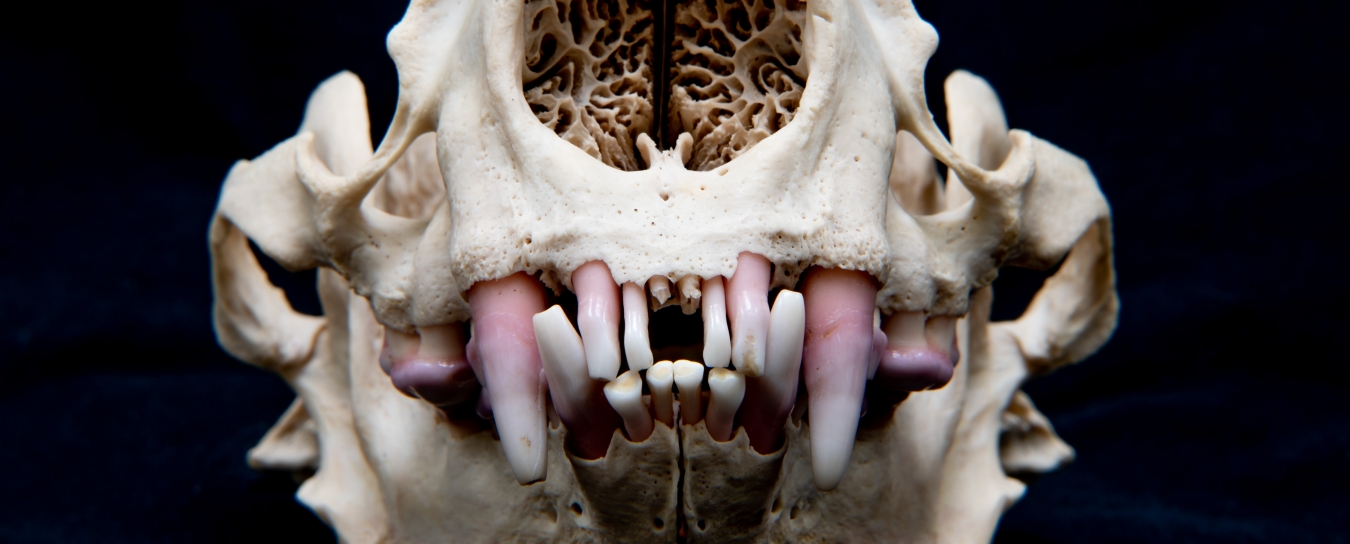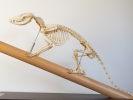
Vertebrates
Browse our Q&A about birds, eggs, nests, amphibians, reptiles, and mammals of the Central Coast and Channel Islands.
- Anthropology
- Rocks & Fossils
- Invertebrates
- Vertebrates
- Botany
- Astronomy
- Fungi
- General
- Recently Asked
What was I before I was dinner?
I found this skeleton in our backyard woods. We frequently see skunks, racoons and opossums on our trail cam, but this looks smaller than a racoon or opossum and larger than a skunk. The skull and jaws look to be about 5" long.
Thanks, Jeff
Curator Response
Hi Jeff,
That’s really neat that you are watching your local wildlife on a trail cam. Thank you for sending us these bones, and particularly for including the scale measurement, which is very helpful. Based on many characteristics, I would say this is a subadult Virginia Opossum. Although it seemed too small to you to be an opossum, the greatest length of the skull in adult Virginia Opossums is only 3.5 X 5.7 inches (77.9 x 145.8 mm). Terrestrial mammals always look bigger alive with a full coat of hair and underlying tissue. The small size of their cleaned bones without any overlying tissue or fur is often surprising.
I say this is a subadult based on the development of the teeth and bones. The epiphyses (the ends) of both the femur and tibia bones are not yet fully fused. The latter shows that this individual wasn’t quite done growing. However, all of the adult molars are fully erupted, so this animal wasn’t all that young, either.
The teeth can tell you a lot about an animal. The arrangement of teeth on an animal is expressed in what we call a tooth formula, with a series of fractions in which the number on top represents the teeth of a certain kind in the upper jaw, and the number below is the number of that kind in the lower jaw. While you can’t see all of the teeth on this skull, there are enough of the posterior tooth rows to show it fits into the tooth formula for Virginia Opossum: incisors 5/4, canines 1/1, premolars 3/3, molars 4/4. On the bones photographed, you can see premolars 3/3 and molars 4/4, and they are the right shape for this species as well. Virginia Opossums actually have the greatest number of teeth (50) of any terrestrial mammal in North America!
Some other characters in on the bones are tip-offs for this species, including a slender skull which is triangular in outline with stout, wide-spreading zygomata (that arching bone under the eye socket, like our cheekbones). You can see it also has a small, oval-shaped braincase and a large sagittal crest which is longer than the braincase. That’s the crest that goes right up the center of the top of the skull.
I’m attaching a photo of a Virginia Opossum skeleton that is in our educational lending library, in case you’re interested in seeing how these bones fit into place.
Stay curious,
Curator of Vertebrate Zoology Paul W. Collins, M.A.


